
During the Barrio Walk in East Los Angeles on November 9, 2025, Art Navarrete and Terry Navarrete give a community member a Centro CSO flyer, highlighting their rapid response phone number. Photo by Susana Canales Barrón.
This story is part of ICE vs. LA, a collaborative reporting project by LA Public Press, Caló News, Capital & Main, Capital B, LA Taco, and Q Voice. The newsrooms worked together to report what actually happens when immigration enforcement arrives — how people mobilize, look out for each other, and try to keep their families intact. Read more from the collaboration here.
When Elizabeth, a Pasadena resident, noticed a suspicious SUV idling outside her apartment complex she didn’t hesitate. She knew exactly what to do.
Elizabeth asked that her last name be withheld for fear of reprisal from federal authorities.
“It was an odd vehicle — the windows were heavily tinted and nobody knew who it belonged to,” she said. In her neighborhood, “everyone knows everyone.” When she stepped closer, she saw an older man behind the wheel and recognized the telltale signs — the same make, model, or plates as ICE vehicles that had been spotted there before. “Immediately, we alerted the apartment complex — basically the entire block,” she said.
Within moments, neighbors poured out of their homes, raising megaphones and sirens. “People started blowing whistles,” Elizabeth said. “Cars pulled over, people started honking, getting out, and surrounding the vehicle, screaming for him to leave.”
Minutes later, local police arrived. Elizabeth suspects the man called them, though it’s unclear who did. He asked officers for help, but they refused. “They asked him, ‘How long are you planning to be here? Because there’s nothing we can do,’” she said. The crowd grew louder. “The whole community just came out, screaming for him to leave.”
Shortly after officers arrived, the man drove off, trailed by honking cars. “It just becomes like a chain,” Elizabeth said. “I make noise, someone else hears it, and they make noise too. It keeps going, further and further, until he’s gone.” She paused. “The noise didn’t stop until he got on the freeway and left.”
Moments like that don’t happen by chance. They’re the result of months of vigilance — a neighborhood defense network born last summer, when ICE raids swept through Pasadena and fear took hold. Elizabeth began patrolling before sunrise, sometimes as early as 5 a.m.
At first, it was just her — a bullhorn, a whistle, and conviction. Then others joined: Daniela, Jesús, Chuy, Boorocks, Karen, Spenser, Janet, and Sandra. They called themselves Grupo Auto Defensa — a name that felt both improvised and inevitable. Inevitable because auto defensa means self-defense in Spanish, and they knew no one was coming to save them.
Across LA, similar scenes have unfolded in recent months: coworkers, customers, and neighbors facing off with ICE armed only with whistles, megaphones or their voices. In Westlake, residents surrounded federal vehicles; at a Walmart, a worker was beaten after confronting agents arresting a janitor. These acts of defiance rarely stop arrests, but they slow the machinery of deportation one interruption at a time.
The whistles. The pots and pans. The megaphones. The voices.

During the Barrio Walk in East Los Angeles on November 9, 2025, Art Navarrete and Terry Navarrete give a community member a Centro CSO flyer, highlighting their rapid response phone number. Photo by Susana Canales Barrón.
In ICE-occupied cities, noise is the first line of defense. What once marked the rhythm of daily labor — the factory whistle signaling a shift change, the clang of cookware in working-class kitchens — has become the soundtrack of defiance. In the face of a federal occupation, these everyday objects have been reimagined into instruments of public dissent and collective safety.
And as the resistance grows, the megaphone joins them — carrying those sounds farther.
Across the country, rapid-response networks now train volunteers to use noise as a form of community alert: whistles to signal a possible enforcement sighting, pots and pans to mobilize neighbors and car horns to draw attention from passing motorists. It’s a loose, decentralized system — one part safety network, one part street theater — grounded in the belief that collective sound can break through isolation and fear.
The group’s motto emerged naturally: “We’re defending ourselves. We’re defending our community. No one’s going to come and save us.”
“When we saw ICE, we started handing out whistles,” said Elizabeth of Grupo Auto Defensa. She hadn’t planned to become an activist; it was pure instinct — survival kicking in.
For her, the instinct was rooted in what she called “survival knowledge” learned in the working-class neighborhoods of northwest Pasadena.
“It’s situational awareness,” she said. “Honestly, it’s just from the hood — it’s everything we learned growing up.”
In June, after reports that federal agents were staying at local hotels, a decentralized campaign called “No Sleep for ICE” took shape across LA. Night after night, small groups gathered with pots, pans and spoons, filling the streets with noise — part protest, part warning — to drive agents away and alert neighbors. The sound became its own language, a signal carried by vibration.
Similar protests have since erupted in Washington D.C. and Chicago, echoing the same message of defiance.
The practice of using pots and pans is rooted in Latin American history, in addition to a long French tradition. The cacerolazo, from the Spanish cacerola, meaning “cooking pot,” first emerged in Chile in 1971, when women banged on empty cookware to denounce food shortages and the repressive rule of Augusto Pinochet. The practice spread quickly across South America — Argentina, Uruguay, Colombia — becoming a sound of dissent for working-class communities who had little else to fight with but their voices and their household items.
In Los Angeles, this is nothing new. For decades, Angelenos have turned ordinary objects into shields, alarms, and rallying cries. During the 2020 George Floyd protests, when curfews and police barricades kept people home, residents stepped onto balconies and stoops, banging pots and pans in unison. As Vox reported, the sound became a form of “distanced resistance” — metallic echoes that stitched together a locked-down city, connecting grief and rage through sound.
LA meets federal power with collective voices
While some rapid-response networks rely on pots, pans and whistles, others depend on something more elemental — their voices.
Once a month, Centro CSO, a grassroots organization in Boyle Heights and East L,A, organizes a “Barrio Walk,” sending volunteers through the East LA neighborhoods hit hardest by federal immigration operations. They move block by block, handing out flyers and sharing information on how residents can protect themselves if agents appear. On a recent Sunday, the group gathered outside the Gothic CVS, a former movie theater known for its Spanish-language films. Many of the volunteers were new.
“There are people here today who have never done this before,” said Sol Márquez of Centro CSO.
“We just use our voices,” said Michael Garcia, a new Centro CSO volunteer.
In neighborhoods like Boyle Heights and unincorporated East LA —places long targeted by ICE — Centro CSO’s alerts move quickly, spreading from text threads to street corners within minutes. “Sometimes we’ll get an alert from a community member that ICE is operating in a certain area, and we’ll put it out on our threads and see who shows up,” Garcia said, adding that well over ten people usually show up.
In Pasadena, the network of rapid communication and the deployment of sound has saved some people from being taken.
On Aug. 15, when ICE agents descended on the Home Depot in Pasadena, “we were able to warn the day laborers with megaphones and whistles,” Elizabeth said.
Workers spotted the agents before they arrived and managed to leave before arrests were made. “They didn’t take any day laborers,” she said. “But they did take two customers. It must have been like seven minivans, SUVs, and pickups. They were all camo’d out, military style.”
Terry and Art Navarrete were also new to activism when they joined Centro CSO at the beginning of the year, shortly after reports of increased federal activity spread through East LA.
Since then, the couple has spent weekends distributing flyers and talking with neighbors about what to do if ICE agents appear in their community.
“We’re stronger in numbers,” Art Navarrete said.
For Grupo Auto Defensa, block parties are part of the strategy — joy as survival. The sounds merge into a street symphony that declares, We’re still here. They throw these gatherings with the same urgency as patrols, and so far, it’s working: ICE has never shown up. The parties have become both shield and outreach — a way to reclaim space, build trust, and remind neighbors that they’re not alone.
“We’ve done a total of about three block parties,” said Elizabeth, the member of Grupo Auto Defensa. But the gatherings, she explained, were never meant to be moments of escape. “It wasn’t a day of forgetting,” she said. “It was a moment of joy. Of resilience.”
Preventative patrolling

Volunteers document federal agent vehicles entering and exiting Terminal Island. Photo courtesy of Harbor Area Peace Patrol.
Down in the Harbor Area, teachers, healthcare workers, and other concerned residents from communities such as San Pedro, Wilmington and Carson are part of the Harbor Area Peace Patrol, a group that informs and advocates for their immigrant neighbors.
Volunteers wake up early in the morning and patrol community hubs such as Superior Grocers and Home Depot, places believed to be vulnerable to ICE or where they have been seen before. From around 6 to 8:30 a.m., residents drive around different neighborhoods keeping an eye out for suspicious vehicles that could be ICE.
Patrol groups carry a bag with items such as a map, flyers, whistles and a megaphone. While patrolling, members sometimes hand out flyers explaining their work to people who might be curious about why they are patrolling in parking lots or other areas. They also share “know your rights” cards and resources for undocumented people and their families.
Yoshi Kuramoto and Nada Rayyes, both members of the Harbor Area Peace Patrol, said they haven’t come across a situation where they’ve had to use the microphone but are prepared to do so. Rayyes said each patrol group is supplied with a short script in English and Spanish of what to say into the megaphone in case they come across ICE that goes something like this:
“ICE is in the area. You have the right to remain silent. You have the right to not open the door to an immigration agent without a signed judicial warrant. You have the right to speak to a lawyer.”
Volunteers take pictures of suspected ICE vehicles and license plates and share them on the group’s Instagram or a group chat alerting the community. The group just completed their 150-day streak patrolling.
“We’re not a rapid response group, we’re preventative,” Lisa Ferguson said, a San Pedro resident and member of the Harbor Area Peace Patrol since its inception.
Kuramoto emphasized multiple times to the LA Public Press that the patrol group operates strictly within their constitutional and legal rights. He stressed that the group does not obstruct nor follow ICE agents but does observe and document.
“We make sure that new patrollers also know that say for example, don’t obstruct or don’t follow ICE agents,” Kuramoto said. “Basically, don’t try to be like a thrill seeker that will potentially not only harm yourself but harm others that are volunteering to patrol as well.”
Part of the group keeps tabs on vehicles entering and leaving Terminal Island, a federal facility that was used to detain Japanese Americans in the 1940s and now being used as a base for ICE operations across Southern California.
In August, Amanda Trebach, an ICU nurse and member of Unión del Barrio was violently assaulted and arrested while monitoring operations on Terminal Island. Videos of the incident showed two men in plainclothes pinning Trebach to the ground, while one of the men briefly kneeling on her head. Treback told Democracy Now that she was taken into an unmarked vehicle and not read her rights. She was detained overnight and released the next day without charges.
The Department of Homeland Security did not respond to a request for comment from LA Public Press on the incident.
“That was super scary,” Rayyes said. “I think after that it made me really hesitant to do the Terminal Island patrols.”
Taking action can carry risks for activists
Niels Frenzen, clinical professor and director of the USC Gould of Law immigration clinic, said that conditions in the detention centers such as Adelanto are “horrible.” People are crammed in there, and there’s no meaningful recreational or educational activities, he said.
The clinic has been representing people who are arrested on immigration violations by federal agents and filing habeas corpus petitions to challenge the Department of Homeland Security’s new policy of mandatory detention for people present in the county without admission
“It’s much easier to do time in San Quentin than it is in Adelanto,” Frenzen said, referring to California’s oldest prison.
Frenzen said it’s difficult for him to watch videos of people being taken by ICE in such aggressive and violent ways. “I just can’t deal with it,” Frenzen said. “It’s so profoundly disturbing.” Especially, when it seems that ICE agents are abusing their power. “DHS is just ignoring the law and doing whatever the heck they please,” Frenzen said.
Frenzen believes that rapid response networks play an important role in reminding people of their rights and observing unlawful arrests. They’re sometimes also able to document people’s names, birth dates and obtain contact information for a loved one to inform of their detention
However, he said bystanders should avoid asking for a detained person’s nationality.
Although actions like recording federal agents and shouting information to detainees from a safe distance may be protected under the First Amendment, Frenzen said, actions such as following border patrol or ICE could probably get people in trouble and trigger a violent reaction from federal agents, including criminal charges.
According to David Loy, legal director of the First Amendment Coalition, the U.S. Constitution’s protections extend beyond spoken words. “Under certain circumstances, sound itself can be considered a form of protected expression,” he said. But people should take precautions. Car horns, for example, have long been used to signal frustration, celebration, or solidarity — a common and deeply American form of expression. Yet in California, that act of honking in support of a cause remains illegal, exposing a tension between everyday gestures of protest and the state’s restrictions on noise.
“People have to make a decision as to whether or not they’re willing to run the risk,” said Frenzen.


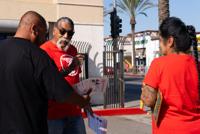
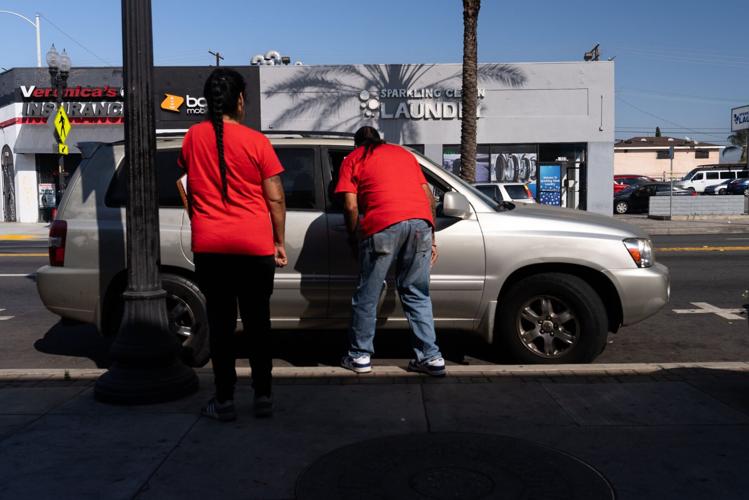
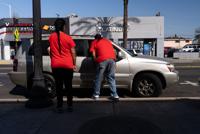
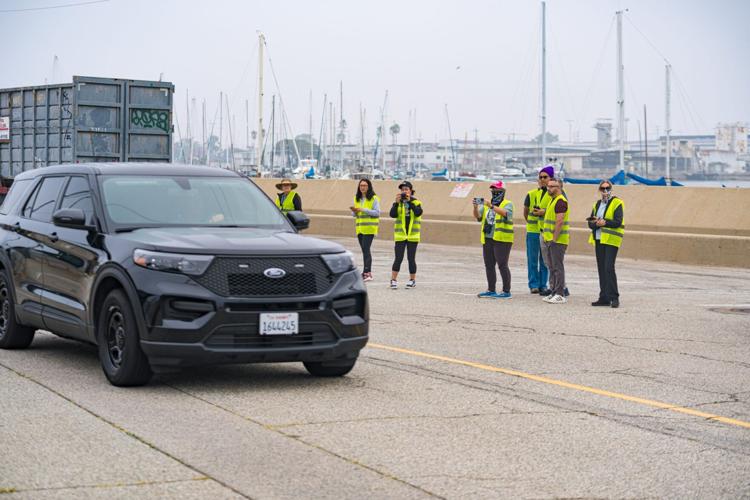


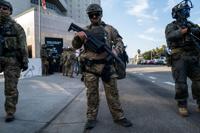


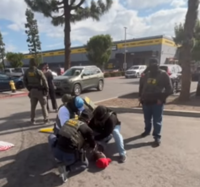

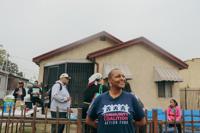
(0) comments
Welcome to the discussion.
Log In
Keep it Clean. Please avoid obscene, vulgar, lewd, racist or sexually-oriented language.
PLEASE TURN OFF YOUR CAPS LOCK.
Don't Threaten. Threats of harming another person will not be tolerated.
Be Truthful. Don't knowingly lie about anyone or anything.
Be Nice. No racism, sexism or any sort of -ism that is degrading to another person.
Be Proactive. Use the 'Report' link on each comment to let us know of abusive posts.
Share with Us. We'd love to hear eyewitness accounts, the history behind an article.